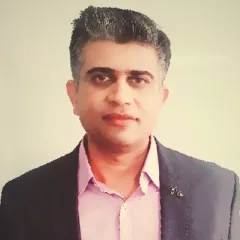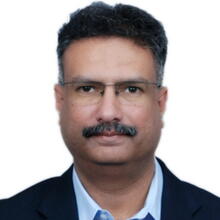
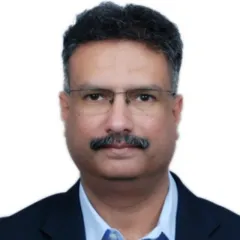
Mr. Rohit VAIDYA is the Head of Computer Aided Engineering (CAE) at Engineering Research Centre, the product development center of Tata Motors. He is responsible for defining and ascertaining the performance attribute assurance through digital simulations of the new vehicle development programs.
Mr. Vaidya began his career with Tata Motors in 1997 after a brief stint at Godrej and Boyce Manufacturing Co. He has completed his bachelor’s in mechanical engineering from Pune University and Master’s from IIT Bombay. He has strong domain experience in multiple domains of CAE. Particularly kinematics and dynamics of vehicles and systems, durability and fatigue, NVH, and computational fluid dynamics.
In over 29 years of his career in the automotive industry, he has held multiple technical leadership positions across the functions - primarily in the simulations and performance assurance. He has contributed to developing a systematic process of front loading engineering calculations and effectively leading the engineering design. CAE is used in two phases. i.e., the targets and specification phase and the validation & certification phase. A significant portion of the attribute development is undertaken in the digital domain and all the essential attributes, viz. NVH, Durability, Dynamics, Climate control, external aerodynamics, and underhood thermal management utilize the latest CAE software and processes. The role of CAE in the design phase has several benefits - notably thorough design space exploration and optimal design. He has contributed to institutionalizing these processes and developing a solid team.
Mr. Vaidya is passionate about math modeling and its role in addressing diverse issues that face society. He has authored & presented numerous papers over 29 years


Chirag is a senior specialist in the advanced engineering department of CEAT R&D. with 14 years of experience in Tyre and vehicle NVH simulation.
Tyre Road Interaction Noise Prediction Using wave6
There has been a massive upsurge in development for low noise tires in recent years. The current progression primarily drives this demand in the automotive market from vehicles powered by internal combustion engines to quieter electric motor power trains. Additionally, awareness among consumers regarding the ill-effects of noise and legislative requirements put forward by governmental bodies to regulate road and vehicle noise played a pivotal role in generating significant interest in tire noise and vibration research. Mechanisms of noise generation in tires can be broadly classified into structure-based vibrations and fluid-induced tread pumping sources. This work has developed a structural and acoustic FEA-based simulation methodology to predict tire noise. The simulation methodology utilizes structural simulation software, DS® Abaqus/Explicit, to derive the deformed state of a tire loaded and rolled on a large drum. This procedure is followed by an acoustic source and propagation simulation using DS® Wave6 software. Testing was conducted in a semi-anechoic chamber with microphones fixed at designated locations around a loaded tire rolling at fixed speeds over a large drum. Finally, the correlation between test data and simulation was excellent, i.e., simulations could predict overall sound pressure levels (SPL) and SPL spectrum with over 90% confidence. The added advantage of this simulation approach is its ability to include parameters such as tread pattern and structural and material changes in tire construction, which will help develop low noise tires with a reduced number of physical trials.
Co-author: Rahul OORATH; Abhishek SARASWAT; Durga Charan MISHRA; Ankit DIXIT; Rahul SANGHANI; Jagadheeswaran A


Balakrishnan D is working as Senior Project Engineer in Dana India Technical Centre (DITC), Pune. He is responsible for design validation of various automotive thermal management components such as Engine oil coolers, transmission oil coolers, battery, and power electronics components coolers. He also performed virtual validation and optimization of various sealing system components such as Cylinder head gaskets, Rubber gaskets, Grommets, Valve seals, and Cam covers. He is one of the method developers to create a standard simulation process and implement a Simulation Process Data Management system (SPDM) across the Dana Power Technologies global technical centers. He has a Bachelor’s Degree in Mechanical engineering from Anna University and a Certification in Engineering design and analysis from IIT Madras. His focus areas are Rubber products development, Sealing solution, Thermal management, Design optimization, and Simulation Process Data Management (SPDM).
Next-generation Data-driven Web Through SPDM Perspective
In recent years of technological advancement, FE modeling practices have been more complex to address the accuracy of the results. It is essential to validate the design based on the actual road load data. The failure occurs due to abuse loading in the entire field, while the basic design validation plan may not consider these loads.
The current need for simulation is to replicate the actual road load conditions in another way to treat the simulation like a digital twin. The standard process of rain flow counting may miss the peaks of abusive loading as it tries to generalize the duty cycle, but it still won’t be able to capture the real-world scenarios.
fe-safe can replicate the accurate time history road load data from the performance engineering department. The simulation process involves applying these road load histories as it is in the fe-safe simulation setup.
This paper demonstrates the effective use of fe-safe for durability analysis using the digital twin philosophy.""Dana virtual design validation team of Power Technologies performs various physics analyses for products such as multilayer steel gaskets, molded gaskets, valve stem seals, transmission and engine oil coolers, battery and power electronics coolers, fuel cell plates, etc. With the implementation of the SPDM platform, all the extensive simulation data have been managed through automated and standardized CAE templates across the Dana technical centers globally.
We decided to create a solution database to move from SPDM data management to design solution. As we all know, the next generation internet will be data-driven. An automated SPDM standard process has been developed to create a database to grab all the critical design parameters and simulation results from every analysis physics. Automatic triggers were deployed to store each analysis results parameter into the Abaqus analysis database. Data-driven design database is a web-based graphical user interface that helps us create various charts and plots. Graphs and plots help us understand each design variable and impact and guide the design team to choose appropriate parameters for any automotive application.
The Abaqus analysis database is also developed to manage computational resources effectively along with the data-driven design database. Each Abaqus analysis output file contains valuable information that we have extracted to the file and built an application that can represent the data in the form understandable to the user and help make decisions. We have created the charts for the proper understanding and developed the provision to filter the data and the pleasing user experience.
Abaqus is the most widely used application for simulation, and SPDM provided the integration with that. The Abaqus data gets automatically imported into the system, and the Abaqus job-related data is also utilized for analysis. With the help of the data, a simple user interface is created, and graphs are designed from that data.
It is the stepping stone in future technologies.
Co-author: Vinita DHANDE, Mohanlal PRAJAPATI, Jason TYRUS, & Amol THAKARE
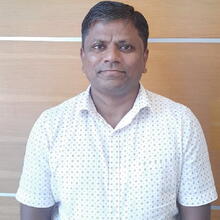
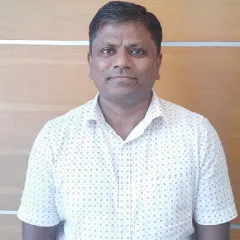
Bapusaheb Rautray has worked with DANA India Technical Centre Private Ltd. for nine years. He started as a mechanical engineer with Safran Engineering Services, Bangalore. He has also worked with Mahindra & Mahindra, Kandivali in the Farm division. In his current role as a Project Leader, he is leading Simulation Projects in Off-highway applications. His areas of expertise include Durability, Optimization, Automation, and NVH. He has a master's degree (M.Tech) from IIT, Kanpur in Mechanical Engineering, specializing in Manufacturing Science.
Topology Optimization of Driveline Trunnions Using SIMULIA Tosca Structure and Abaqus
Weight reduction in the vehicle industry is an essential measure to increase vehicle efficiency and reduce material, manufacturing costs, and emissions. This also becomes essential for VA/VE activities where already proven products are driven by well-defined load cases & already mapped through physical and virtual validation. Topology optimization has established itself as an innovative way for weight reduction, especially for casting parts. This paper presents the Topology optimization using Tosca Structure and Abaqus for driveline Trunnion castings. The objective was to minimize the mass considering given stiffness demands formulated using geometrical manufacturing constraints and casting feasibility simulation. A total weight saving of 27% was achieved using optimization.
Keywords: topology optimization; manufacturing constraints; design; virtual validation; casting feasibility
Co-author: Kumar Gaurav GUPTA
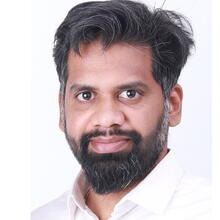
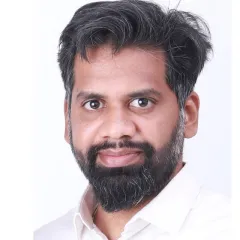
Akula holds a master’s degree in Computational Fluid Dynamics from the University of Petroleum and Energy Studies. He has worked for the Indian Register of Shipping as a Surveyor in the Research & Development division for ten years. His primary focus is on research to improve quality & safety in the marine industry and protect the marine environment.
He is currently working to develop onboard and underwater noise prediction guidelines for the marine industry.
Numerical Computation with Added Mass Effect Using Wave6
Ship vibrations are greatly influenced by the inertial forces of the surrounding fluid. The fluid mass that vibrates along with the ship hull is called “added mass,” which is in addition to the ship structure mass. Traditionally, this added mass is determined independently with specific existing analytical solutions in ship vibration analysis, depending on the wetted surface shape. But if the hull form is complex/ unconventional, it becomes difficult to use such analytical methods.
The authors have used a numerical-based approach with Wave6 software using the acoustic finite element method to overcome this difficulty in analyzing the structural response with fluid loading. In this approach, fluid is represented with 3D finite elements. To verify this numerical model, a benchmark study was performed on a test geometry (cylinder), and wave6 software results were compared with the results of the analytical method and other numerical-based methods such as BEM. Finally, the process developed was used on an actual vessel to analyze the wet mode shapes.
Co-author: Sharad DHAVALIKAR
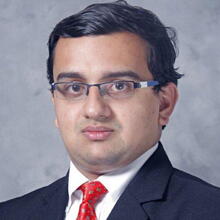
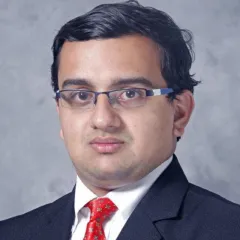
Kalpesh has more than twelve years of experience in structural validation of driveline, hybrid & electric transmissions. He has a master’s in science degree in automotive engineering from Coventry University, UK.
Analysis of Parking Pawl Mechanism for EV Gearbox
Park lock mechanism is a mechanical device in automatic and electric vehicle transmissions to prevent the unintentional rollback of the vehicle brought to a stop. Generally, the mechanism has a park gear attached to the transmission’s output shaft; when the driver moves the transmission shift lever selector to park mode, the parking pawl ratchets. It engages with park gear at a certain speed. This speed is called engagement speed. Park lock mechanism needs to comply with FMVSS and ECE regulation requirements on engagement speed.
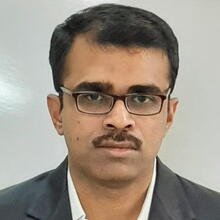
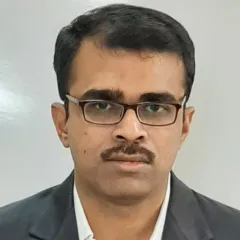
Overall 24 years of CAE experience in FEA & Fatigue Analysis of E-drives, E-axles, Chassis & suspension components, Light weight design of Aluminum intensive structures, Fatigue testing of structural components.
Sensitivity Analysis of Design Parameters of Park Lock System in E-drives Using Isight
The park lock system in E-drives need to comply FMVSS regulations. During design of park lock system, various design parameters such as actuator ramp angle,
actuator spring stiffness, pawl return spring stiffness, pawl design, park gear tooth width, actuator spring pre-load are varied to achieve desired
performance of the system. This process is manual and time consuming. In current paper, Isight is used to automate this process. In Isight, DOE feature is
used to evaluate effect of various design parameters and then sensitivity analysis was performed to find design parameters which has significant impact on
engagement speed. It has helped to reduce product development time significantly.
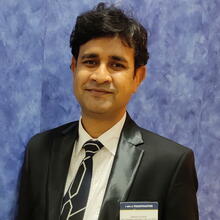

Manish is working in Kirloskar Oil Engine as assistant general manager in the simulation department. He has sixteen years of total experience and ten years in the simulation domain.
Multi-Body Dynamic Vibration Analysis for Four Cylinder Inline Engine For Industrial Application
The commercial success of any new product development program depends on the “time to market” and “First time Right” design. Hence simulation tools are being extensively used in the new product development process. The diesel engine components are subjected to complex structural and thermal loads, which need to be studied to ensure an optimized product.
The four-cylinder Inline-type engine is a high-speed engine designed for industrial application. Due to high engine speed (RPM) and the critical application, the vibration study of the engine becomes essential.
A transient dynamic simulation of the diesel engine is carried out for the entire engine cycle. The simulation model includes all major engine components to account for correct mass and stiffness properties. A substructuring technique is used to reduce the model size and solution time. All the essential excitation loads are applied, and the displacement and acceleration response on the engine is calculated. The simulation results are validated by comparison with vibration measurements during physical testing of the engine. The comparison shows a good correlation between simulation and testing. AVL Excite Power Unit module and Abaqus FEA software are used to analyze.


Keerthinath completed Mechanical engineering in 2011 from VTU Belgaum. He has more than ten years of experience in CAE and has been working with TATA Motors for the past three years.
Finite Element Analysis and Material Characterisation of Honeycomb Sandwich Structure for Automotive Application Using EASYPBC and Abaqus
Mechanical requirements and weight targets demand composite materials in various applications. With ever-increasing competition and path towards environmental sustainability has led the industry to think about durable, less dense, and environmentally friendly materials. Composite sandwich structures constructed with Honeycomb can effectively absorb impact in many engineering applications.
This study considers a sandwich structure with a paper honeycomb core and thin face sheets of thermoset polyurethane. The study’s objective was to replace the existing design of the automotive part with a lesser-weight sandwich composite structure. The orthotropic properties for composite structures are primarily calculated using EASYPBC and analytical methods. Correlation between the CAE and Analytical methods is established. Tests were conducted as per ASTM standards to validate these methods, and a comparison was made. The comparison between test, CAE, and Analytical methods was within the acceptable accordance of 10% variation. Orthotropic property extraction was done through Abaqus/CAE and Easy PBC, and static analysis was done using Abaqus using the orthotropic properties.
Once the co-relation was achieved for the test, analytical, and CAE methods, the orthotropic properties were used to simulate the actual application with the standard load cases. It was found that there was a weight reduction of almost 40% without compromising on the intended performance.
Co-author: Vijay SHAH and Ranjit BABAR


Rohan has more than ten years of experience in Automobile CFD applications. Currently, he is responsible for exterior Aerodynamics, WDM, and Aeroacoustic simulation support for all ranges of Passenger and commercial vehicles in Tata Motors.
Assessment of Passenger Car for Surface Dirt Contamination
Self-soiling or surface dirt contamination is an everyday phenomenon observed during the rainy season wherein dirt on the road is deposited on the vehicle surface through wheel rotation and is also influenced by airflow around the vehicle. Soiling plays a critical role concerning vehicle safety and visibility issues and therefore needs important consideration during vehicle development. Hence, it is important to understand physical and digital techniques for assessing such a situation.
Work presented here looks at means for accessing the surface contamination through physical tests, which can be repeatable, reliable, and boundary conditions that are well understood and controlled to be used as a reference for digital simulations. The presentation talks about the outcome of a self-contamination physical test in a wind tunnel and its validation with a digital test using commercial CFD code concerning a case study on an SUV.
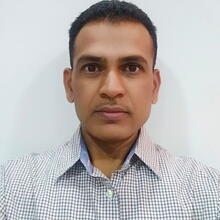
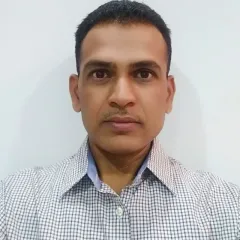
Sanjay is Post Graduate Engineer with Professional Qualifications in Mechanical Engineering. He is the Deputy General Manager - Digital Solutions –CAE at TATA Motors Ltd. He has wide & varied experience in the design & development of automotive vehicles ICE and EV. He has been associated with the automotive engineering segment for around 24 years. He has experience in structural durability assessment of automotive structures on live projects. He is responsible for successfully delivering design and virtual validation of passenger vehicles, commercial vehicles and powertrain systems. He has published several research papers at various user conferences & internationally acclaimed journals, including SAE International.
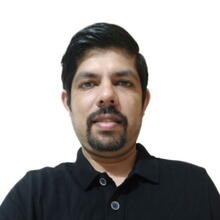
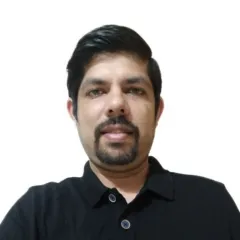
Ameya has a master’s degree in Mechanical Engineering (Design Engineering) from Vishwakarma Institute of Technology (University of Pune), 2008. He is currently the Senior Team Leader-CAE at TATA Technologies Ltd. He has more than 13 years of FEA & fatigue analysis experience at the Engineering Research Centre of TATA Motors Ltd. His expertise is in powertrain, vehicle structures, CAE, and durability for Commercial & Passenger Vehicles. He also has many research papers and technical presentations to his credit.
Fatigue Assessment & Correlation of Seam Welded Structures Using fe-safe Verity
The fatigue life of typical welded structures is governed by the stress concentration at welded joints & small crack propagation from some pre-existing discontinuities at notched regions. There are many weld fatigue assessment approaches available that are unified using commercial fatigue software codes in conjunction with traditional finite element methods. This weld fatigue assessment is based either on nominal stress approach, hot spot stress approach, or fictitious notch stress approach or combination of these approaches and the widely accepted international weld standards like IIW, Eurocode, BS, etc. However, most of these FEM stress-based approaches predict extensively conservative results. Considerable efforts & subjective decision-making are required to arrive at the desired level of weld life correlation with physical test results; weld life results in clarity, quality in terms of several weld life cycles, and weld failure location. This is because of inconsistency & inaccuracy in capturing the hot spot stress results due to stress singularities occurring at the notched regions owing to the mesh sensitivity. There are significant challenges in handling the weld modeling complexity. Specific weld fatigue assessment approach proves well with only a particular type of loading & joint type. This has accounted for limitations & inconsistency in achieving the weld failure results correlation using simulation with in-house physical test results in qualitative & quantitative weld life assessment. Hence, it was necessary to find some consolidated weld fatigue assessment approaches other than FEM stress governed weld fatigue approaches. It should work with complex loading conditions, different weld joints, suitability for handling modeling complexities. This was needed to reduce the number of failures in physical tests by addressing & tracking failure beforehand in CAE and thereby saving cost involved in redesign and revalidation. Hence, Verity's force-based equivalent structural stress solid weld approach was explored on different in-house product use cases. For carrying out weld fatigue, life assessment correlation study between simulation results in froma force based equivalent structural stress solid weld approach in Verity and physical test results, DOE matrices for open and closed welds were formulated and evaluated.
The DOE matrices of these product use cases were chosen to accommodate the mix of weld life assessment aspects/variables/parameters such as a. weld algorithm b. mesh size, i.e., mesh sensitivity c. survival probability d. loading direction & weld direction. Based on this DOE matrix evaluation, the weld life was assessed in a. test correlation about failure life cycles & location b. results quality & interpretation clarity. The key findings from these product use cases for open and closed welds were presented based on the inferences drawn on multiple physical test correlation evidence. To better correlate weld life simulation results obtained from Verity with that of physical test results, the specific weld definitions & analysis parameters guidelines were streamlined. For some particular open-ended weld cases, clear weld definitions have been identified & set to capture the end-capping traction effects. For some closed welds, throat failure mode has been recognized & simulated. Assessment of weld subjected to a complex combination of normal & shear structural stresses has also been studied & decision factors identified.
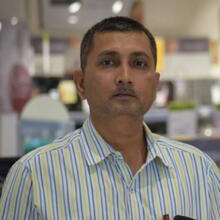
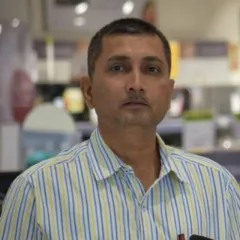
Shailesh P. PATIL is the Project Manager CAE . He has over 25 years of experience in Academics and CAE Durability Domain.
A Case Study on HCV Tipper Body Virtual Drop Test Simulation in Abaqus
CAE has become an integral part of the new product development process in Auto OEMs for developing safer, reliable, and lightweight products. To cater to the market requirements, Auto OEMs offer a wide range of products from Drive Away Chassis DAC on which customer builds the body or Fully Built Vehicle FBV based on the application.
The HCV Tipper trucks play a significant in transportation and are considered the best by heavy haulers for road construction and mining. The tippers transport crushed aggregates, sand, asphalt mix, dolomite, limestone, and other mining and construction materials with varying shapes and sizes. Materials dropping from a certain height generates impact loads and eventually causes floor panel denting. A dent is a permanent deformation created in a meeting due to impact load. With the increased demand for weight reduction, usage of Advanced High Strength Steel AHSS materials along with reduced gauge panels should meet the product service life target. There are no acceptable norms/standards for commercial vehicles panel denting tests.
The present study demonstrates a virtual two-step drop test -Impactor hitting and release simulation of HCV tipper floor using Abaqus/Explicit dynamics. Based on field inputs, a rigid spherical impactor around half a meter dia. is dropped from a certain height, resulting in floor panel permanent deformation. Design sensitivity study included floor thickness/material parameters and underbody cross runners pitch variation. The study concludes material strength has the highest impact on permanent deformation reduction. Increasing the floor panel thickness or cross runner pitch reduction results in permanent deformation similar to the floor panel. Study results helped to implement design improvement with less mass impact.
Co-author: Vijay A SHAH


Rishabh Gosavi, CAE Engineer for Full Vehicle Durability at TATA TECHNOLOGIES LTD., deputed to TATA Motors LTD. He holds a Bachelor’s degree in Mechanical Engineering from Government Engineering College, Aurangabad and has four years of experience in the CAE domain in a commercial vehicle. During his career, he has worked in vehicle level, subsystem and busbody analysis using various linear/non-linear and fatigue codes.
A Simplified Approach for Engine Mount Stiffness Characterization for Shock Test Simulation
Automotive Industries focuses on developing new products considering safety, durability, and comfort & ride quality aspects. Traditional design and physical prototyping and testing are being replaced by virtual prototyping and numerical simulations to reduce the product life cycle time. Automotive engine mounted on the vehicle chassis or body with elastomeric engine mounts plays a crucial role in isolating the engine vibrations and fatigue. The vehicle body or chassis experiences various shock loads due to road profile and engine dynamics during service life. Dynamic shock loads experienced by chassis frame engine mounting brackets are the critical design inputs to ensure vehicle durability and reliability. An engine mount is a rubber integrated with a steel structure bolted to the chassis frame. Various methods viz—1D FE modeling with linear nonlinear stiffness and 3D FE modeling with hyperelastic material characteristics can represent elastic engine mount characteristics in a virtual environment. 3D mount representation needs the test data for accurate FE modeling. The most challenging part of the CAE analysis is engine mount representation, interaction, and its stiffness characterization. There are various methods to build a finite element model for the engine mount, such as the simplest way of modeling by 1D elements with linear stiffness properties to the complex method of capturing by using 3D elements with hyperelastic material data. Present work focuses on a simplified approach that has been developed for engine mount structural durability performance under shock loading. This study has summarized various parameters like accurate input data requirement, FE model building complexity, run time and stability of the model, results in accuracy, quality, and correlation with physical test.
Co-author: Vaibhav PATHAK & Rajiv VERMA
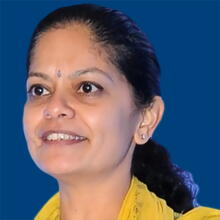

Renuka SRINIVASAN is currently SIMULIA Sales Director for India. In her current role, she is responsible for the SIMULIA business in India. Prior to this, she was WW Services Director for SIMULIA. Renuka has over twenty years of experience in the simulation business and was instrumental in setting up the SIMULIA business in India. She was worked with customers across a variety of industries including automotive, aerospace and defense, industrial equipment manufacturers, civil engineering, engineering services providers, among others. She was a Bachelors's in Civil Engineering from BITS, Pilani, and a Masters's from Duke University.
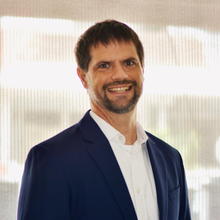

Klaus KROHNE received his Diploma in Electrical Engineering from the Darmstadt University of Technology, Germany in 2002 and his Doctor of Sciences from the Swiss Federal Institute of Technology (ETH) in Zurich, Switzerland in 2007. From 2007 to 2009 he was a Researcher with the A*Star Institute of High-Performance Computing in Singapore. His research interest is in the area of electromagnetic simulation and component optimization techniques. In 2009 he joined CST (Computer Simulation Technology) South East Asia Pte Ltd in Singapore, which was acquired by DASSAULT SYSTEMES in 2016. Today Klaus is responsible for the SIMULIA sales and technical sales in the Asia Pacific.
SIMULIA Brand Update & Highlight
SIMULIA is a Simulation brand within Dassault Systèmes, the 3DEXPERIENCE company. We provide technology for simulation in each domain – covering Structures, Fluids, Electromagnetics, Multibody, Vibro-acoustics, and Automation & Optimization. This presentation offers a brief overview of these technologies and illustrates that you are using the same technology (per domain) whether you are a standalone product user or are a 3DEXPERIENCE platform user. We then highlight multidisciplinary and multiscale solutions of select industry processes and workflows. We also introduce a new unified licensing model that provides access to all solvers from the same license pool. The new model includes a cost-effective approach to encourage simulation-based design exploration. The presentation concludes with a peek into the remainder of the RUM agenda, including deep-dive sessions in each domain.
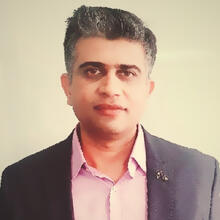
Shripad TOKEKAR has been working with Dassault Systemes for close to 13 years. Over the decade-plus career in Dassault, Shripad has been working with various customers across industries to deploy industry best processes for simulation. He started a career as an applications engineer providing technical support, training, and services and further closely worked with Automotive Industry to develop best practices, workflows & methodologies.
In his current role as an Industry Process consultant manager, he is leading a team of experts from various domains such as Structures, fluids, EMAG, MBS & Optimization. Shripad has a keen interest in understanding the Industry processes and deploys the best practices.
He has a Master’s Degree (MTech) from IIT Delhi in Applied Mechanics with a specialization in structural mechanics.
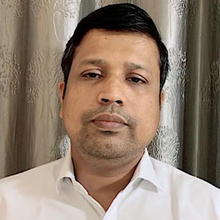
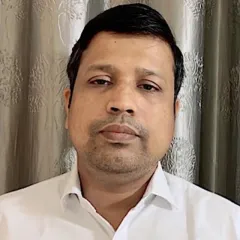
Dayanidhi has been a part of SIMULIA for the past 12 years. He is part of the industry team and his areas of technical expertise include SIMULIA on 3DEXPERIENCE Platform, Composites, Optimization, and Multi-Body Simulation. He has worked for various T&M and A&D clients such as Bombardier, Tenneco, L&T, Ashok Leyland, Mahindra, TATA, HERO Motor, HONDA, ISRO, Airbus, CSIR, DRDO Labs, etc. He holds Bachelors's Degree in Mechanical Engineering and Masters's in Thermal Engineering.
SIMULIA on 3DExperience Cloud for Realistic Simulation
Presentation on the latest roles and functionality on 3DEXPERIENCE Cloud from SIMULIA. It will update What’s New in R2022X GA & FD01 and What to Sell in 2022, complemented by practical demonstrations using focused use cases. This includes a walkthrough of the latest release of PowerFLOW on 3DEXPERIENCE Cloud.
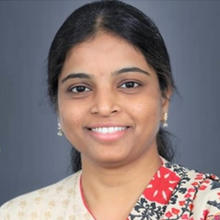

Geetha AVULA started her career with Dassault Systèmes in 2004 and has been with the company since then. She started as an Applications Engineer and is now the Senior Technical Manager. As a support engineer she has provided technical training and support for SIMULIA products primarily Abaqus. She has interacted with many customers giving them guidelines on the issues they are facing, suggestions on their workflows etc. In her current role, she’s responsible for driving initiatives such as Electric Vehicles, Additive Manufacturing, Cloud solutions, to be able to guide companies on the technology Dassault Systèmes has to offer. Interacting with many Electric Vehicles companies in India and working with the global team she is supporting quite a few clients in the EV space. She holds a Masters Degree in Computational Mechanics of Materials and Structures from University of Stuttgart, Germany.
Integrated EV Development from Concept to Certification
3DEXPERIENCE provides an integrated environment to develop electric vehicles from concept to certification. Developing a new electric platform requires expertise spanning multiple physics domains including structures, fluids, electromagnetism and beyond. SIMULIA IPEs can help OEMs deliver higher performing, more durable, stylish vehicles faster. This talk will show how the 3DEXPERIENCE platform integrates the entire EV development process from early concept development all the way through detailed engineering and product launch. Highlights include:
- E-drive development
- Concept body structural engineering
- Faster detailed structural design & verification
- Vehicle styling and emissions certification
The 3DEXPERIENCE platform empowers multi-physics simulation as well as coordination across OEM departments to improve the quality and speed of developing electric vehicles through all stages of product development.
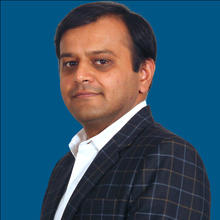
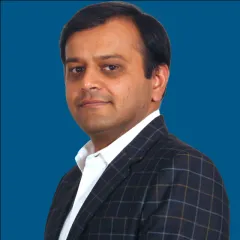
Dhiraj NAHAR graduated in Mechanical Engineering and has been working with DASSAULT SYSTEMES since 2003. He has 17 years of experience in CAD & CAE. At DASSAULT SYSTEMES SIMULIA, Dhiraj has worked in multiple roles such as Customer Support Engineer, Quality Assurance, Software Development, Product Management. In all these years he has worked on developing CAD and simulation tools in our products and has worked with several key customers and strategic partnerships.
Since the beginning of 2019, Dhiraj has been leading a WW team of design & simulation engineers who are responsible to create multi-physics industrial solutions using the DASSAULT SYSTEMES 3DEXPERIENCE Platform. Along with his team, he works closely with our WW customers, understands their requirements and deploys our integrated modelling & simulation solutions in their environments, ultimately leading to substantial productivity gains for our customers.
Integrated EV Development from Concept to Certification
3DEXPERIENCE provides an integrated environment to develop electric vehicles from concept to certification. Developing a new electric platform requires expertise spanning multiple physics domains including structures, fluids, electromagnetism and beyond. SIMULIA IPEs can help OEMs deliver higher performing, more durable, stylish vehicles faster. This talk will show how the 3DEXPERIENCE platform integrates the entire EV development process from early concept development all the way through detailed engineering and product launch. Highlights include:
- E-drive development
- Concept body structural engineering
- Faster detailed structural design & verification
- Vehicle styling and emissions certification
The 3DEXPERIENCE platform empowers multi-physics simulation as well as coordination across OEM departments to improve the quality and speed of developing electric vehicles through all stages of product development.
